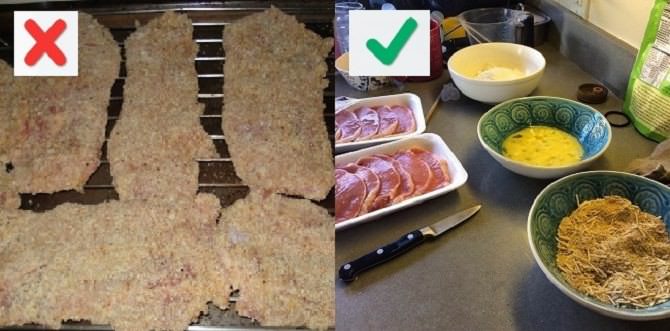
Cooking can be therapeutic for many of us; dealing with raw materials with different textures, tastes and colors is a kind of art and the act of cooking itself can be especially relaxing. This wonderful cooking experience can easily be destroyed by common mistakes that many of us occasionally make, such as over-seasoning, inadequate seasoning, or even over-cooking an egg, which can damage the taste of food.
To avoid such problems, familiarize yourself with the 12 common mistakes made by cooks in the kitchen and the easy solutions that can save a meal and make cooking an enjoyable experience once more.
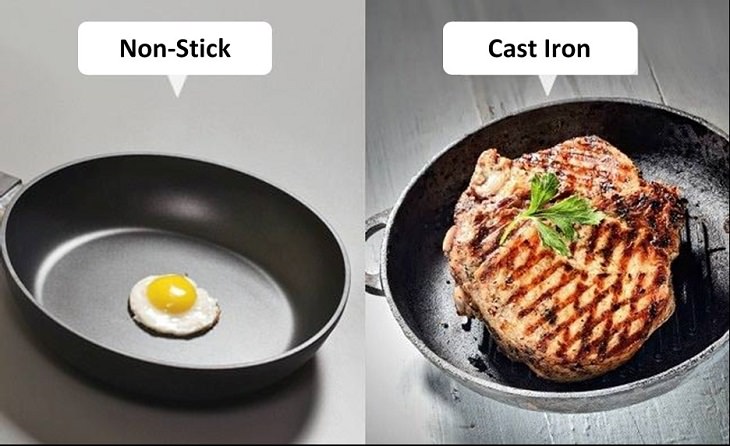
The mistake: If you want to fry meat so that it’s nicely seared, don’t do it in a nonstick pan. Pans of this type do not reach the high temperatures required to sear meat and therefore don’t create a crisp layer.
The fix: Nonstick pans are more suitable for frying eggs or pancakes, and if you want to make juicy meat with a crisp seat, fry it in a cast iron frying pan, which heats to high temperatures allowing the meat to cook properly.
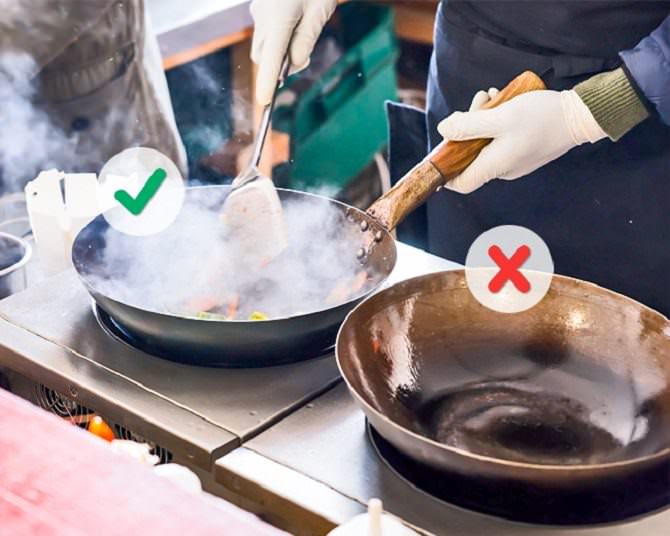
The mistake: Another mistake that many make when preparing food in a pan is not heating the pan enough, which causes the food to be cooked unevenly, to lose liquids and dry out, which is why chefs say, "If you think the pan is hot enough, wait another two minutes."
The fix: How do you know that the pan is hot enough? Spray a few drops of water on it and if they sizzle or "pop" on the pan it’s a sign that your pan is hot enough. After this step, you can add oil, but you should wait for the water to evaporate first.

The mistake: People, when rushed for time, often use frozen meat in their cooking thinking it’ll defrost quicker while being cooked. Unfortunately, meat cooked this way may seem ready on the outside but will be almost raw on the inside. The same applies to oven roasting.
The fix: To avoid such a situation, place thawed meat outside the refrigerator or freezer for two hours and allow it to reach room temperature before cooking. Properly thawed frozen meat cooks uniformly and tastes better after cooking, as opposed to semi-frozen meat.
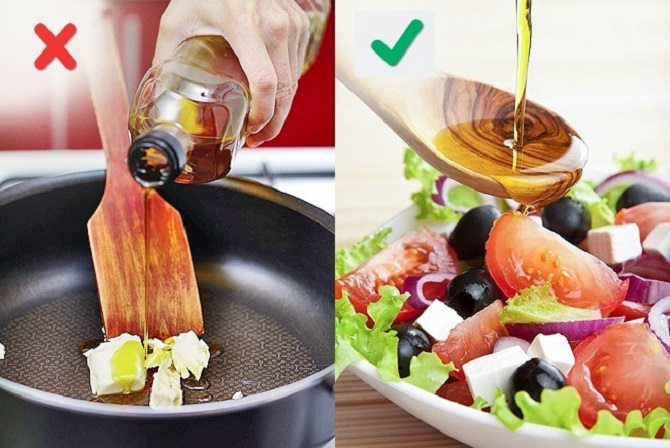
The mistake: When frying, oil reaches high temperatures, and when it comes to olive oil high temperatures cause it to lose its nutritional value and it starts to burn. As a result, the taste of your food may be destroyed maybe even making the meal inedible.
The fix: To avoid this, use olive oil for seasoning and not for frying. Canola oil, for example, is resistant to high temperatures, which is why it’s recommended for frying.
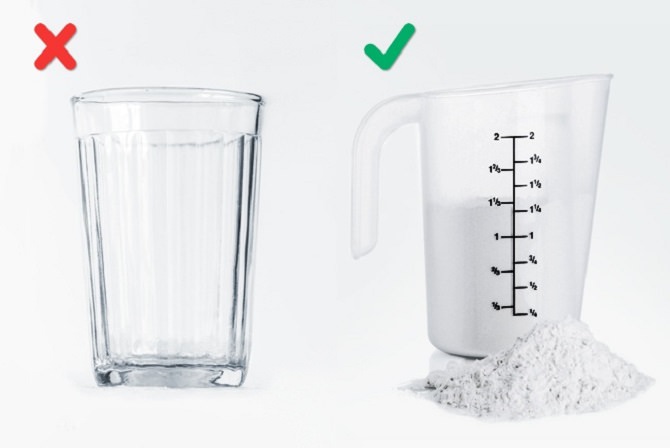
The mistake: The vast majority of people enjoy eating pastries, and those of us who enjoy the baking process know that this is a delicate science, and therefore precise quantities must be used by measuring the ingredients. When measuring in a glass cup people often forget that it holds different volumes of dry and liquid products, and therefore will never give an exact measurement.
The fix: To avoid mixing incorrect amounts of ingredients that may destroy the pastry, use a professional measuring cup that has one row for volume and another for weight.
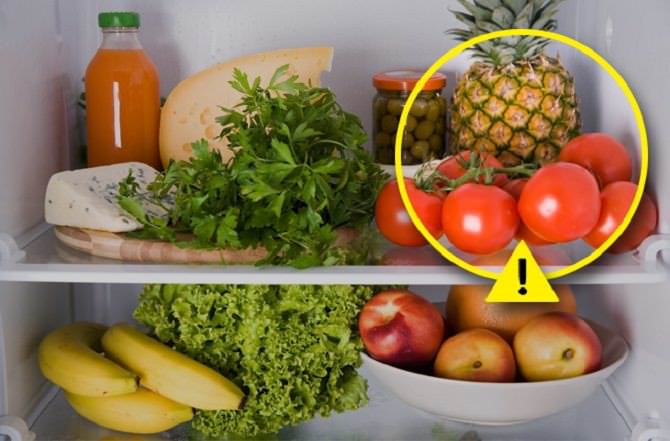
The mistake: We all want to keep food we buy at the grocery fresh, but it's not a good idea to put every single item in the fridge. Vegetables such as tomatoes, onions, garlic, potatoes and tropical fruits like kiwi and mango tend to spoil and lose their flavor when cooled, but they retain their freshness when stored in a warm place.
The fix: To maintain the freshness of fruits and vegetables, check which ones should be kept in a warm place and place them in open baskets to keep them fresh for longer.

The mistake: Over-frying garlic causes it to burn and lose its taste and texture. This happens because the water content in garlic is low, so when you fry it too long, the water inside it evaporates quickly and it burns.
The fix: In order to enjoy the unique taste of garlic, add it to food towards the end of the cooking process or fry it for 2-3 minutes, remove it from the pot or pan and set it aside until you want to add it to the food you are preparing.
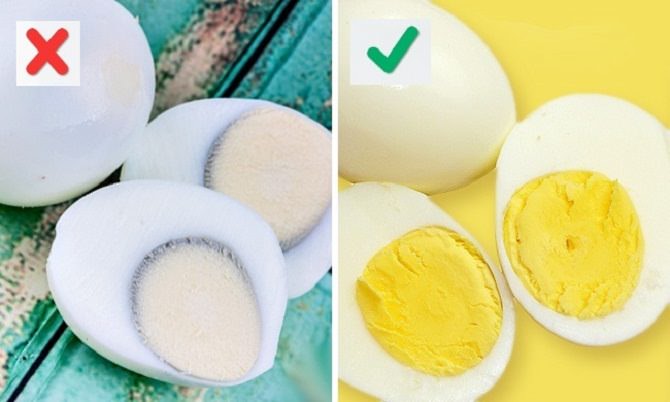
The mistake: Many people think that if the egg yolk looks gray after cooking it is a sign that the egg is spoiled. However, this color is not related to the quality of the egg, but to the time of cooking. An egg that cooks too long turns gray and rubbery.
The fix: To maintain the color of egg yolks, remove the pot from the heat as soon as the water begins to boil, cover the pot and let the eggs remain in the water for another 10 minutes before you peel them.
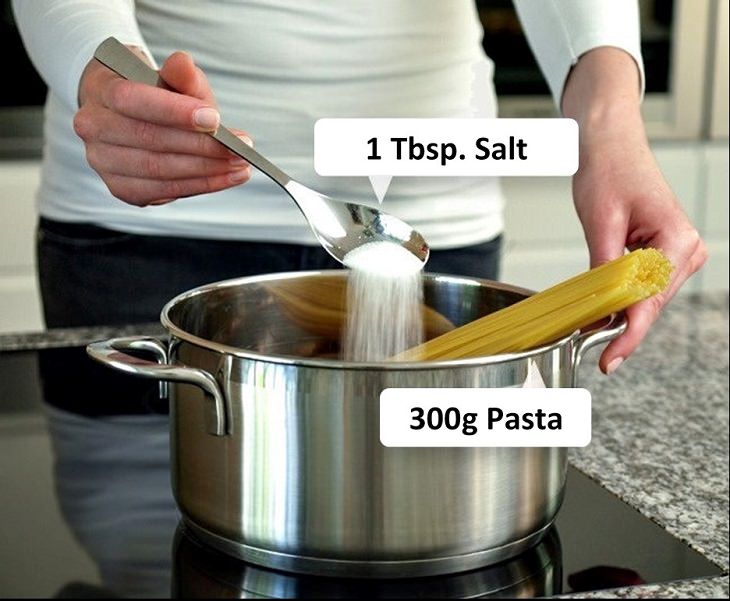
The mistake: Many people are afraid to over-salt their pasta, so they don’t add any salt, which makes it tasteless. Topping non-salted pasta with a delicious sauce won’t help in this case because unsalted pasta doesn’t absorb flavors like salted pasta does.
The fix: In order to salt your pasta properly, use the following rule: Add one tablespoon of salt to every 300 grams of pasta. This way you can be sure that your pasta dinners will be full of flavor.
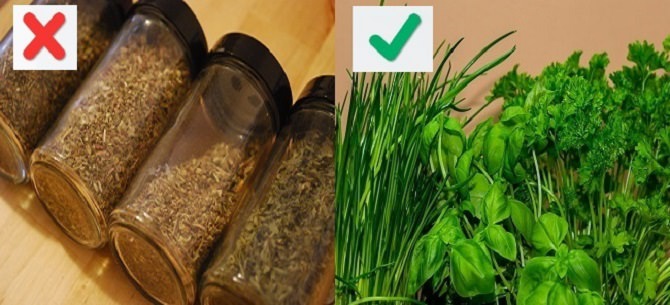
The mistake: When there are no fresh herbs in the house, we usually use dry, packaged substitutes, but this may ruin the taste of food. Drying herbs like parsley and basil causes them to lose their taste unlike drying oregano and tarragon which develops and enhances their flavors. Therefore, adding dried herbs instead of fresh causes the taste of food to either be too concentrated or not strong enough.
The fix: If you get stuck without fresh herbs in the middle of cooking, consider the taste concentration of the spices mentioned above and add them to the dish accordingly. Also try to store fresh herbs in paper towels that absorb moisture, so that you always have fresh herbs on hand.

The mistake: Frying wet vegetables for a hot and healthy side is a mistake. Frying vegetables such as spinach or arugula that still have water on them causes them to lose their crisp texture leading to them being soft, soggy and unpleasant to eat.
The fix: To enjoy the wonderful taste of fried or stir-fried spinach, you should purchase a salad dryer, or absorbs the water from the vegetables with paper towels before cooking them.
